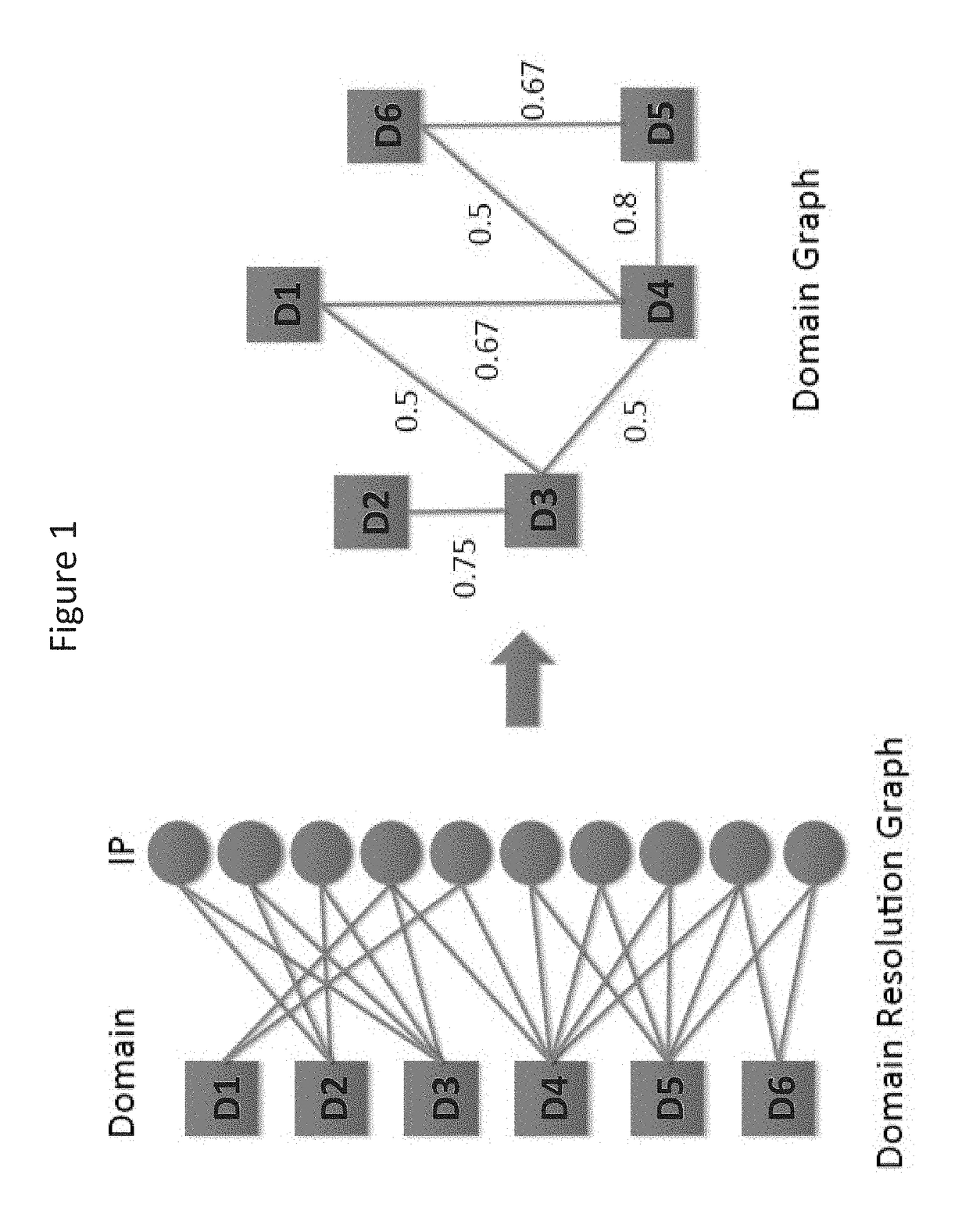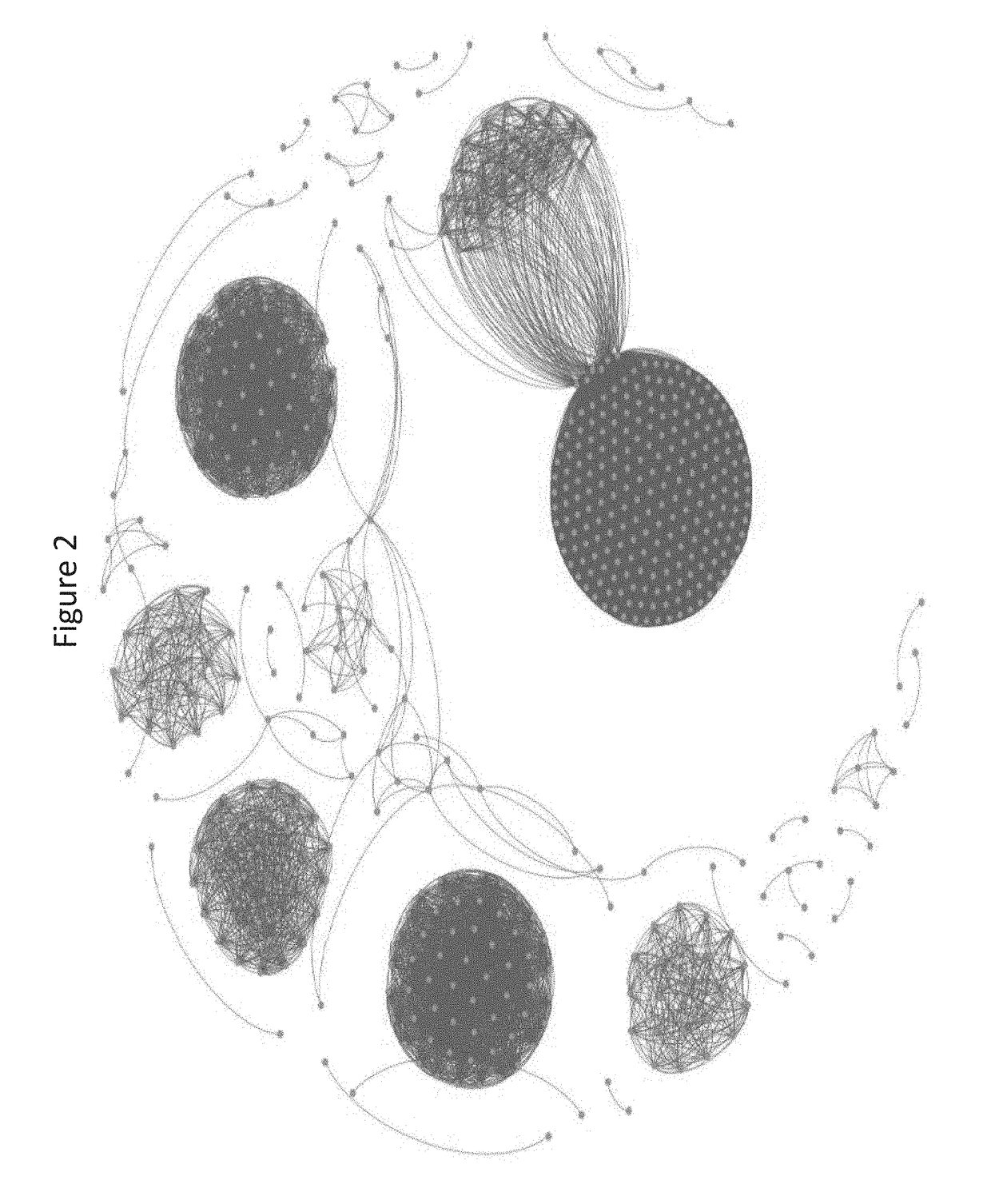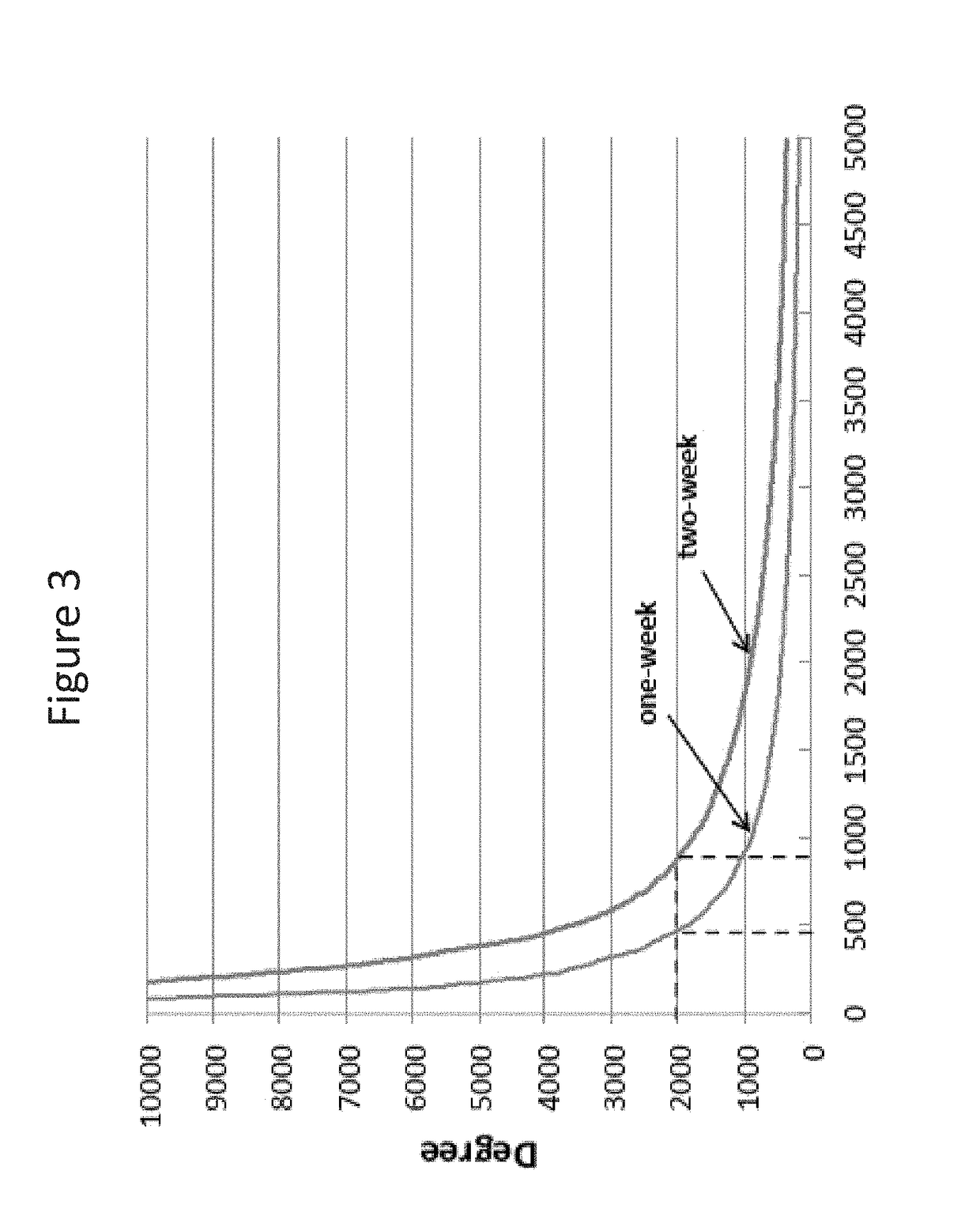Method to identify malicious web domain names thanks to their dynamics
a dynamic and domain name technology, applied in the direction of transmission, platform integrity maintenance, electric devices, etc., can solve the problems of many local features that are not robust, and many of the features used are not robus
- Summary
- Abstract
- Description
- Claims
- Application Information
AI Technical Summary
Benefits of technology
Problems solved by technology
Method used
Image
Examples
example 3.1
[0094]Consider the simple domain graph in FIG. 1. Assume D3 and D5 are known to be malicious, i.e., S={D3, D5}, and one would like to compute mal(D1, S). One can see that the strongest path between D1 and D3 is simply the edge connecting them. Therefore, assoc (D1, D3)=0.5. Similarly, the strongest path between D3 and D5 is (D3, D4 D5) and so assoc(D1, D5)=0.536. Then, since assoc(D1, D5)>assoc(D1, D3), we have mal(D1,S)=0.536+(1-0.536)×0.5×½1=0.625. One can compute similarly that mal(D2,S)=0.788, mal(D4,S)=0.85 and mal(D6,S)=0.714. If one sets the threshold t=0.75, D2 and D4 will be flagged as potential malicious domains.
Practical Considerations
[0095]The above description of some embodiments is based on the observation that a strong association between two domains exists if they are hosted at many common IPs in a period of time. This association may suggest that they are controlled by the same owner. For example, a botnet master may deploy phishing websites among a subset of bots i...
PUM
 Login to View More
Login to View More Abstract
Description
Claims
Application Information
 Login to View More
Login to View More - R&D
- Intellectual Property
- Life Sciences
- Materials
- Tech Scout
- Unparalleled Data Quality
- Higher Quality Content
- 60% Fewer Hallucinations
Browse by: Latest US Patents, China's latest patents, Technical Efficacy Thesaurus, Application Domain, Technology Topic, Popular Technical Reports.
© 2025 PatSnap. All rights reserved.Legal|Privacy policy|Modern Slavery Act Transparency Statement|Sitemap|About US| Contact US: help@patsnap.com



